Brussels sprouts, no longer the unwanted vegetable you grew up with, are now trendy. The cultivated Brassica oleracea, which includes broccoli, cabbage, and other vegetables, is the source of these tiny, spherical veggies.
This produce presents certain difficulties because of its lengthy growing season and the typical lack of knowledge among growers. It’s one thing to know when to harvest a cherry tomato, jalapeño, or summer squash, but it’s quite another to know precisely when and how to cut off a Brussels sprout.
Thankfully, it’s not as difficult as you may believe. There’s always something new to learn, whether this is your fifth time cultivating Brussels sprouts. To help you maximize your harvest from start to finish, we’ve compiled a list of eleven expert advices.
Choose Seeds Wisely
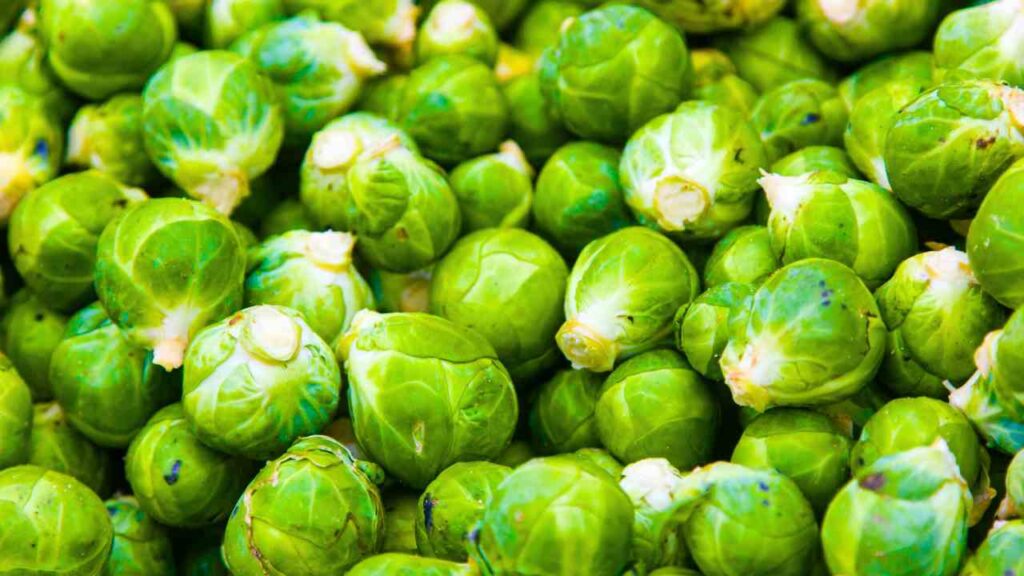
Planting the correct seeds is the first step to the best Brussels sprout yield. Warm-region gardeners can plant in the fall and harvest in the spring; however, most gardeners usually plant in the spring with the intention of harvesting in the fall.
As you will want to select seeds for a cultivar that matures inside the specified time frame, decide which window of time you intend to develop yours. “Long Island Improved” can achieve maturity in as short as 85 days, whereas cultivars like “Silvia” need around 100 days.
Growers in colder climates where the growth window for this long-season crop is more constrained should be particularly concerned about this. Although they can withstand temperatures of about 20°F (-7°C), brassicas won’t last very long.
Sometimes cultivars are bred to resist frost and disease, depending on where you live. You might wish to look for a cultivar of Brassica that is resistant to black rot if your plants have already had this problem.
Silvia’s high resistance to Fusarium yellows and moderate resistance to black rot make it an especially robust variety. It resists even early bolting.
Plant When It’s Best
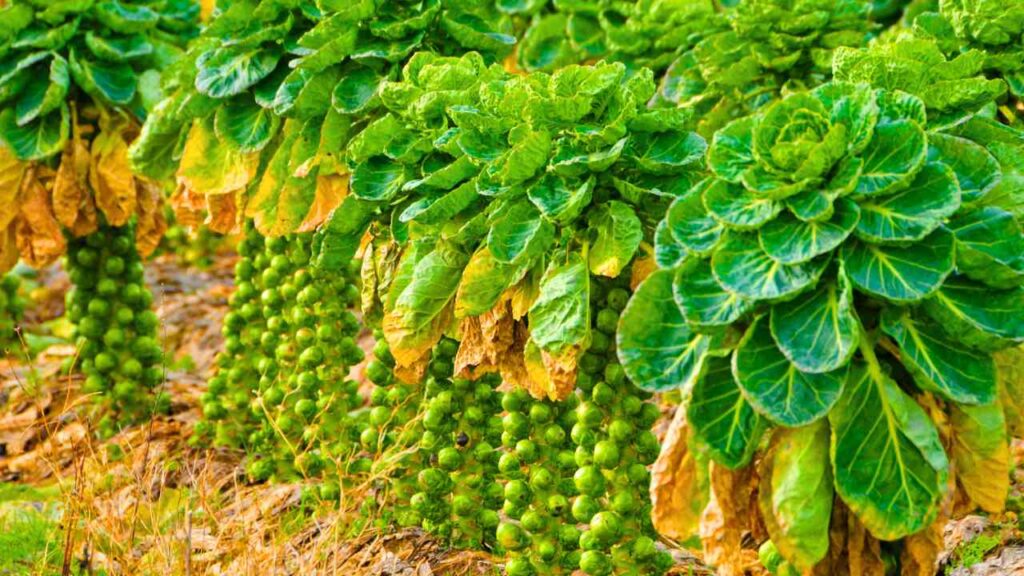
Choosing the right time to plant this vegetable will help you decide when to begin picking it for the most freshness. Because of their lengthy growing season, gardeners frequently recommend planting them in the spring or early summer for harvest in the fall.
After beginning from seed, Brussels sprouts should mature in 12 to 15 weeks, depending on the type. Take into account the “days to maturity” of your cultivar or variety and mark the calendar for the first harvests.
Try to schedule around bolting as well if at all possible. The ideal growing temperature range for these plants is 45 to 75°F (7 to 24°C); if it gets too hot, they may bolt. As a result, they might begin investing their energy in growing flowers rather than sprouts.
Choosing the ideal time frame might be difficult because of the long time it takes for these plants to yield high-quality vegetables and their propensity to bolt. Time management requires a great deal of foresight if you truly want to harvest a large number of sprouts.
If you’ve had difficulties bolting brassicas in the past, make a note of the times that work best for you. Additionally, it might be worthwhile to look for cultivars that are resistant to bolts.
Maintain the Cleanliness of Your Plants
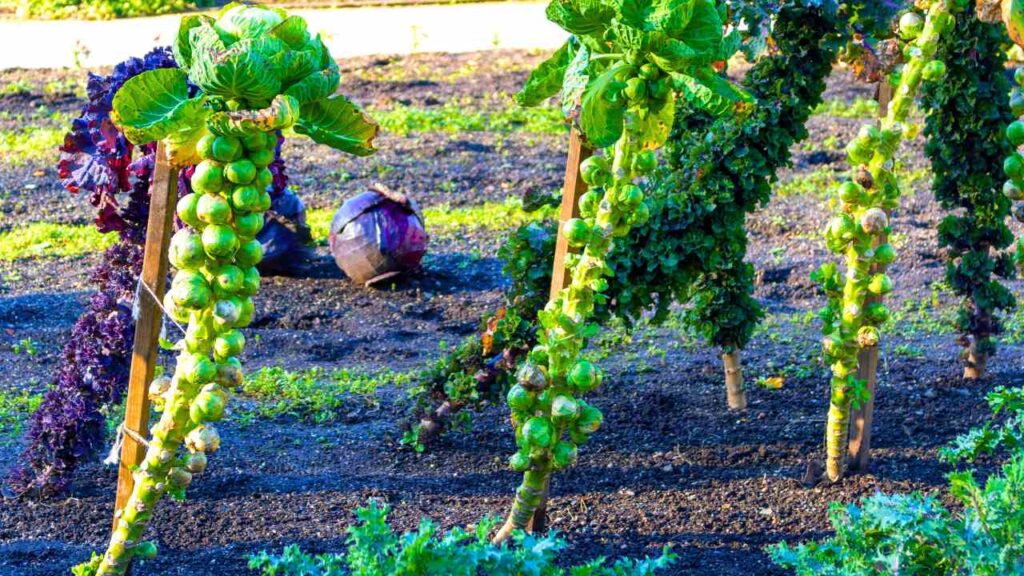
Keep them healthy by pulling weeds and fading leaves.
Now that your plants are flourishing, it’s critical that you maintain their cleanliness. If you notice that the plants’ leaves are turning yellow or browning, you should cut them off. You can also remove the lower leaves from the stem. Leaving dead plant matter lying around may reduce your yield.
It’s unnecessary to keep damaged or unnecessary leaves because you want the plants to focus on sprouting. Use sharp pruners to remove stubborn leaves rather than pulling on the plant, which puts it under needless stress.
Additionally, regularly pull weeds from surrounding your plants. These weeds will compete with one another for soil water, nutrients, and space. They may contain pathogens as well. The lengthy growth season of these brassicas gives pests plenty of opportunity to move across from neighboring weeds.
Mulch is another technique to keep the area surrounding these veggies tidy. In addition to helping the soil retain moisture and reduce weeds, spreading mulch of any kind along the base of your plants can also help keep the roots warmer as winter approaches. It also has a pleasant, new appearance.
If you’ve previously had problems with particular pests, you can also use row coverings to protect young plants from unsightly damage. Simply covering brassicas and other small plants with netting can protect them from the unsightly wounds caused by gnawing pests. Furthermore, it could potentially halt the spread of pest-transmitted diseases.
Look Forward to the Harvest
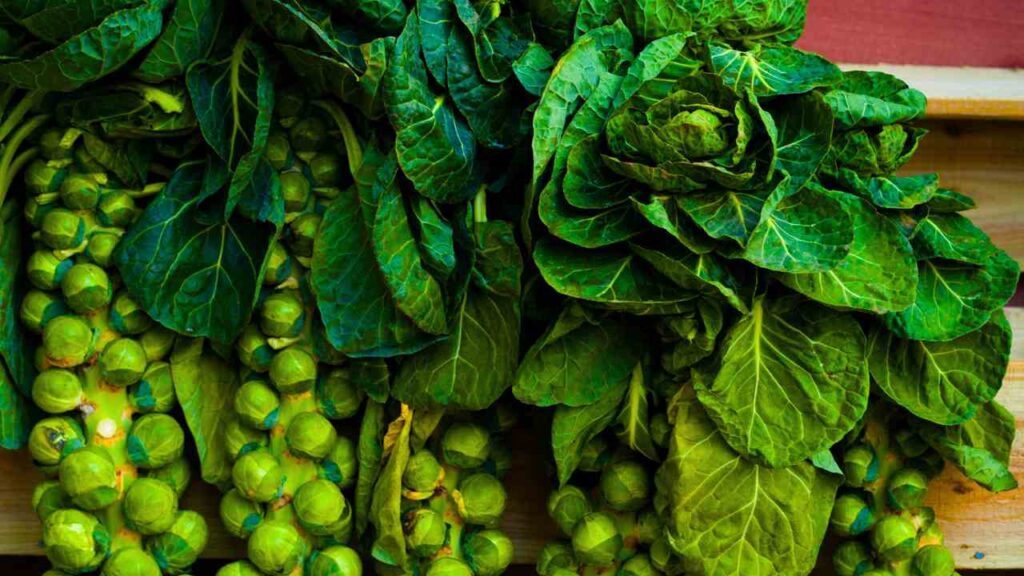
To guarantee a timely and ideal harvest, make advance plans.
It’s time to make plans for your ideal harvest now that your sprouts are beginning to form. Based on when you started seeds or transplanted, you should have a general idea of how many days your plants should take to mature.
During this period, you should start searching for any plants that are ready. If you’re not the type of gardener who goes outside every day to check for developments, consider making a note in your calendar.
Additionally, note the anticipated date of the first frost. Brussels, like other brassicas, will survive the initial frosts. They may even be more delicious now. However, the 20-degree temperature that will prevent your plants from producing is approaching after the first frosts have passed.
Approximately from the anticipated maturity date until steady 20-degree temperatures, this is your entire window for gathering. To ensure you don’t forget and miss a sprout, write down these possible dates somewhere.
Harvest As Soon As Possible
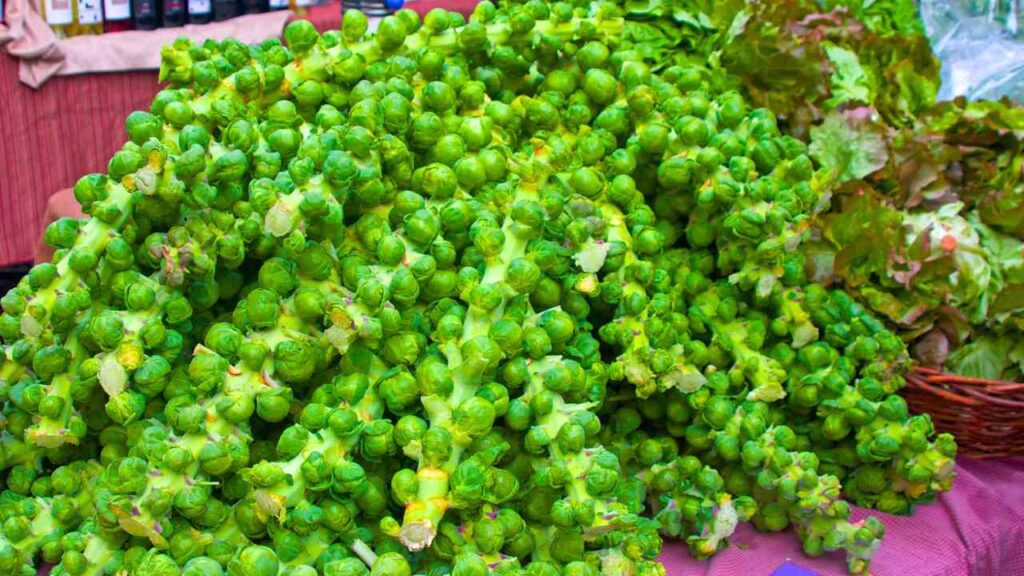
For optimal flavor and texture, collect vegetables as soon as possible.
Harvesting should begin as soon as the tiny rounds start to form. When the vegetables are still green and firmly packed, their texture and flavor will be at their peak. Older sprouts will start to loosen and become yellow. These won’t taste as wonderful, but you can still eat them.
When you notice peak Brussels, keep a check on your plants and harvest from them. You can assess the size of the leaves in addition to their color and degree of wrapping. Brussels should have a diameter of one to one and a half inches, though there is significant variance depending on cultivar and variety. They should also be firm in texture.
Don’t wait till the size is appropriate. Harvest immediately. You might be able to get rid of any yellow leaves you see. The sprouts will continue to have a consistent texture and taste as long as they are still green beneath. However, you have missed the peak window if they are all yellow.
It won’t be disastrous if you miss a few. A single plant will continue to produce many. Just remember your mistakes and resolve to avoid making any more during the window of optimal freshness, while the plant remains attached.
First, Harvest The Oldest Sprouts
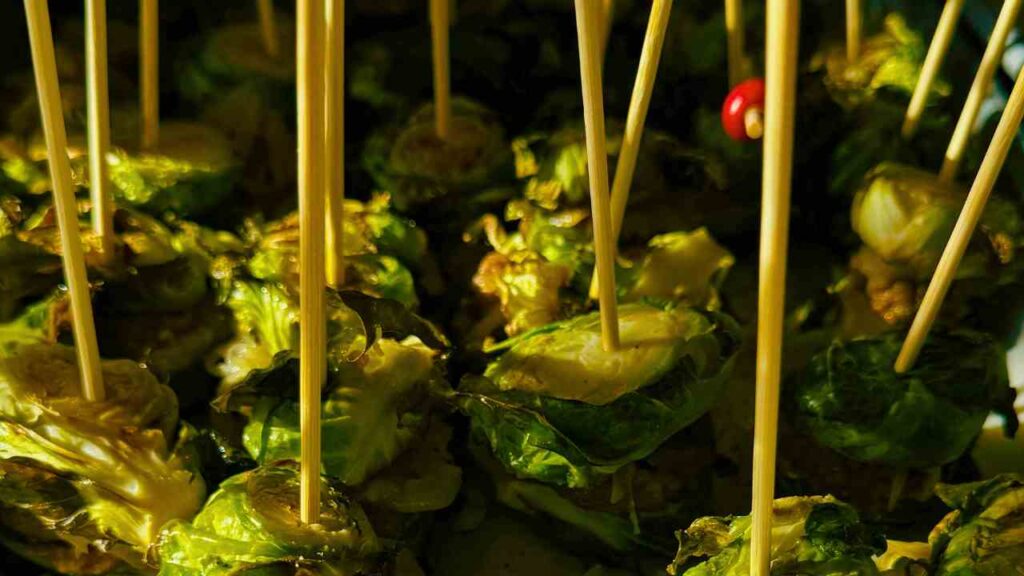
To find the oldest sprouts, start by looking at the bottom.
All along the vertical stem, these plants will grow, with the oldest ones at the base. The oldest will be the first to reach their ideal harvest window. Therefore, glance toward the bottom when you step outside to see how your plants are doing.
These older buds will mature quickly and become less attractive for harvest if you don’t remove them. Harvest them as soon as you can to maximize your experience.
To allow your plant to focus its energy on the remaining sprouts, gather these first. The younger ones aren’t ready yet, despite the temptation to gather them all at once. These vegetables are a true test of patience.
Check Frequently
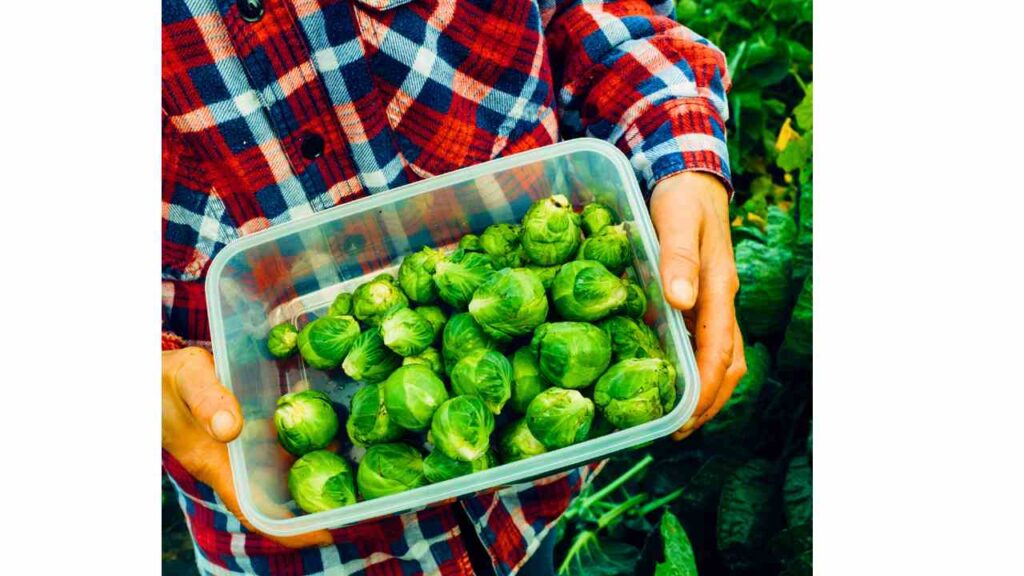
To guarantee your kitchen is at its freshest, collect frequently.
Continue collecting on a regular basis when you begin. Checking on your plants every few days and harvesting anything that is ready is an excellent method to keep them under control. This guarantees that the vegetables you bring into your kitchen are always the freshest.
Although there generally won’t be a significant change from day to day, you can even check daily if you’d like. Fortunately, Brussels sprouts are rather simple to keep in the refrigerator, so you may keep them there for a short time until you have enough to make a dish.
To store them, put them in the crisper drawer in a plastic bag. You might discover that they survive considerably longer, but they should last at least five days. Look for additional ready-to-harvest plants every few days and place them in this bag.
Make Use of Sharp, Clean Tools
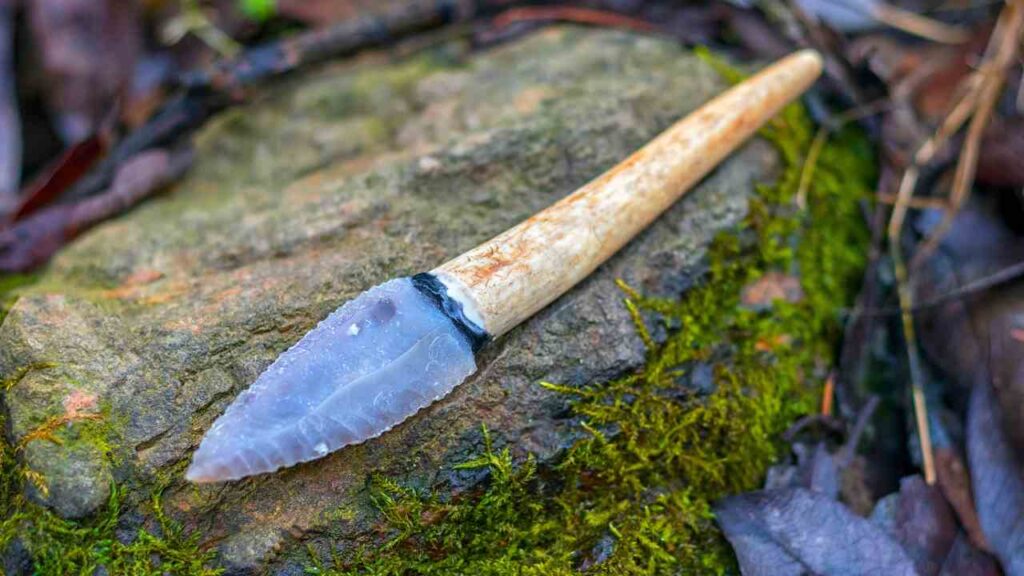
For best results, use sharp instruments and keep things clean.
You should remove dead or dying leaves to keep the plants clean, but it’s also crucial to harvest with clean, sharp instruments. You can pick sprouts by hand, but it’s better to remove them with the right equipment.
Any garden tools, including pruners, should be kept hygienic and clean. Due to the lengthy growth season of these brassicas, plant diseases have a huge window of opportunity to proliferate.
The list of possible pests and illnesses that could harm Brussels sprouts is a little long. Some of the pests and diseases that can affect these brassicas are nematodes, aphids, thrips, and imported cabbageworm larvae.
The diseases include black rot, bacterial leafspot, downy mildew, root rot, verticillium wilt, and white mold.
Every time you cut off a sprout, you create a small wound in the stem that could potentially spread illness. Dull tools cause even more stress, resulting in a more ragged cut on the stem.
Your minimum responsibility is to sanitize any plant-contact equipment. Cleaning and disinfecting garden tools after every usage is the recommended course of action.
Accelerate the Procedure
To speed up the ripening of the remaining sprouts, trim the tops.
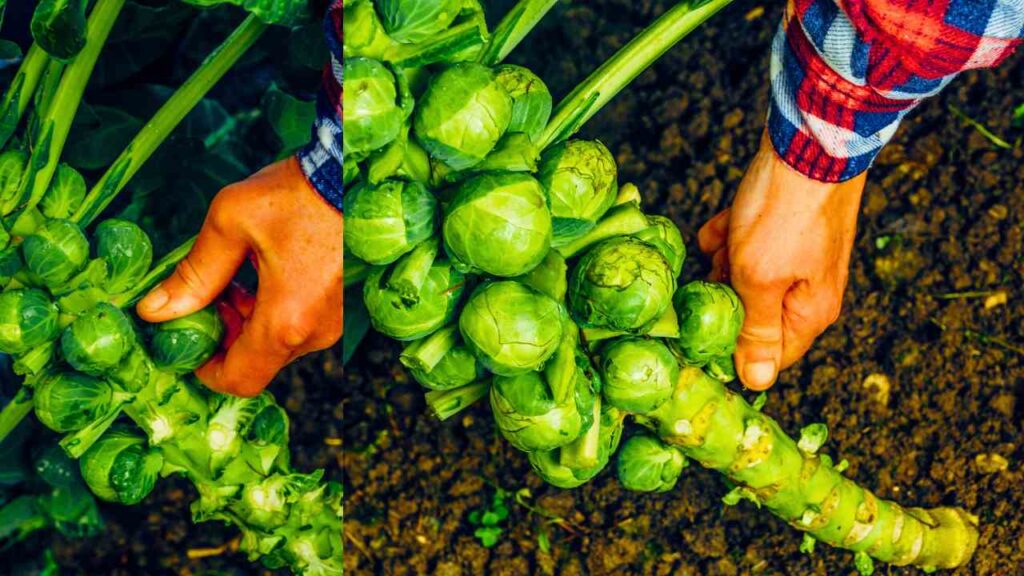
Depending on your growth season, this optional step can have a big impact, particularly if you began your seeds or transplanted late.
You might wish to trim the tops of your plants when it’s only a month or perhaps six weeks away. If you do this, the plant will no longer expend as much energy on growing tall and producing leaves. Rather, it will expedite the remaining sprouts’ process, giving them more energy.
By doing this, you may be able to harvest the remaining sprouts before they ripen. Keep in mind that although these plants may withstand frosts and harsh temperatures, they won’t last very long once the temperature regularly drops to 20°F (-7°C) or lower.
Any new growth from the top won’t have enough time to mature and attain optimal quality because the first frost is only four weeks away. Cut off the plant’s top to increase the number of buds that will ripen.
Where should you cut exactly? A few inches from the top, right above the sprouts’ developing area, make a clean incision (with a sharp, sanitized knife).
Gather Your Last Harvest

Monitor the temperature closely for the optimal collection time.
When the temperature outdoors reaches 20°F (-7°C), healthy plants will cease to produce sprouts, but they will continue to grow long into winter.
Where you live will determine whether this occurs as early as September.
The first frost is not the same as this milestone. Frost does not affect Brussels sprouts, and in fact, it is common to harvest the best ones after the initial frost. However, once the first frost has actually arrived, begin monitoring the forecast for temperatures of 20 degrees.
It’s time to harvest your last crop when the temperature reaches 20 degrees. You have the option of harvesting the entire stem or only the last few. Near the soil line, cut off the entire stem with a strong pair of loppers.
You can eat any remaining tiny buds. They’ll be smaller than the others, but no less delicious. The stem itself is also edible. Prepare it just like you would with broccoli stems.
Make Plans for the Upcoming Year
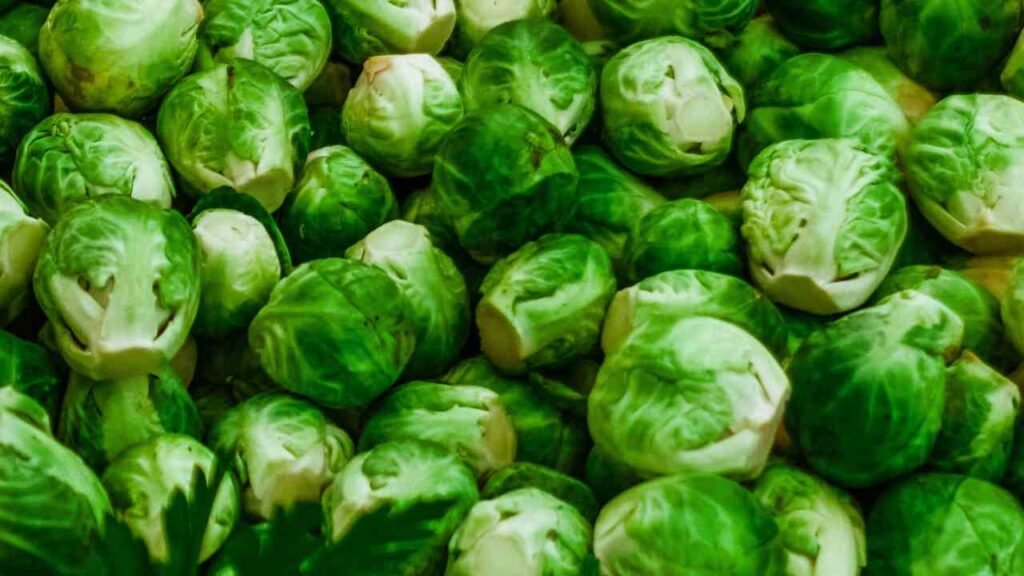
Make notes now to increase gardening success the following year.
One of the finest ways to get better as a gardener every year is to make notes about your harvesting experience when the season is over. It won’t be long before the next season arrives, particularly if you plan to start seeds indoors.
The easiest method to duplicate this year’s accomplishments or fix any mistakes from this year is to start planning for next year now, while everything is still fresh in your mind.
Jot down any problems you encountered with diseases or pests so you may look into ways to control or avoid them the next year. Make sure to record which cultivar performed the best and why, if you grew more than one in different places or cultivars. If you’ve found a new preferred method for baking Brussels sprouts, make sure to master it as well.
Remember to try different methods and times for harvesting your vegetables and discover which textures and flavors work best for your meals.

